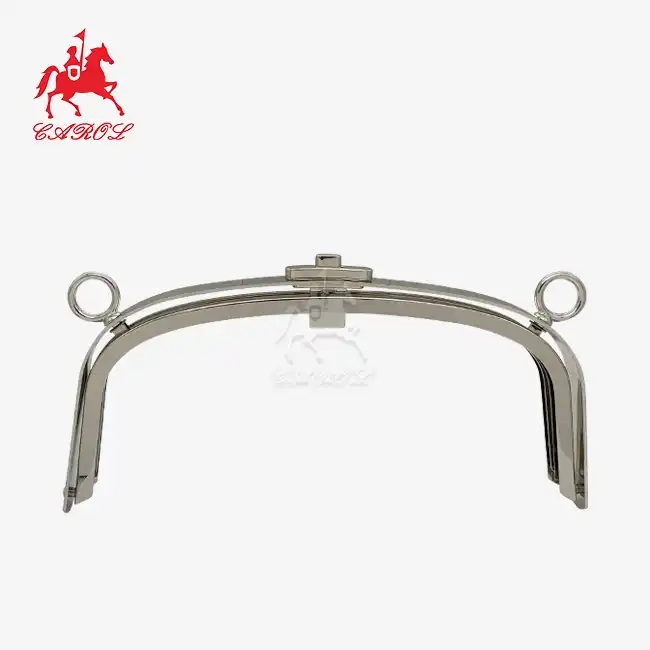Iron
Iron-based metal clasp purse frames represent a traditional approach to purse hardware manufacturing, offering robust structural characteristics that have made them a reliable choice for generations. Iron's natural strength enables frames to hold their form under pressure, which is especially useful for bigger bags or designs that are heavy-duty. Iron retains its dimensional stability even after thousands of cycles of opening and shutting, in contrast to softer metals that may distort with time. Because iron reacts well to a variety of forming procedures, including as stamping, bending, and welding, it is often preferred by manufacturing facilities for use in complicated frame shapes that would be difficult to achieve with other materials.
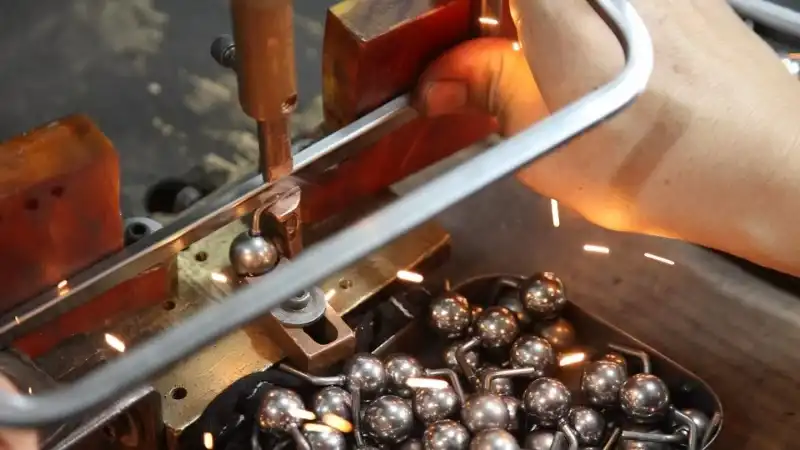
Surface treatment becomes critical when working with iron metal clasp purse frames since the base metal exhibits susceptibility to oxidation when exposed to moisture and atmospheric conditions. Electroplating processes apply protective layers of gold, nickel, or chrome finishes that serve dual purposes—preventing rust formation while providing decorative appearances that align with fashion trends. Advanced coating technologies have improved adhesion between iron substrates and plating layers, reducing the occurrence of finish peeling or flaking that plagued earlier production methods. Quality control during the plating phase ensures uniform coverage across intricate frame details including hinge points and clasp mechanisms.

The weight characteristics of iron metal clasp purse frames deserve consideration during the design phase. Although strength is beneficial, frames significantly add to the total weight of the bag due to iron's density. While designers who create structured totes or satchels may like the hefty feel that iron provides, those who deal with evening bags or clutches may find this weight unsuitable for their artistic vision. Material choices are also influenced by cost; iron usually has lower costs than alloy substitutes, which makes it desirable for large-scale manufacturing when consumers are price sensitive. When purchasing hardware for mid-range handbag collections, buyers often discover that iron frames, such as the metal clasp purse frame with handle, provide the best possible combination between cost and functionality.
Zinc Alloy
Because of its remarkable casting qualities and advantageous strength-to-weight ratio, zinc alloy metal clasp purse frames have become more and more popular in the production of contemporary purse frames. Intricate design elements that would be difficult or impossible to achieve with other materials are made feasible by these alloys, which usually combine zinc with aluminum, copper, and magnesium in precisely balanced proportions. Die-casting techniques minimize the need for assembly and possible failure spots by producing frames with intricate three-dimensional features, ornamental patterns, and integrated hardware components in a single manufacturing run. Molten zinc alloy's fluidity enables it to fully fill intricate mold cavities, producing accurate dimensions and sharp edges that satisfy high quality requirements.
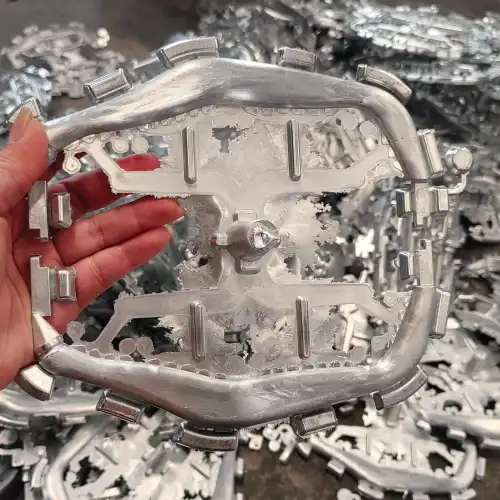
For accessories that are exposed to a variety of environmental conditions, the corrosion resistance that is inherent in zinc alloy compositions offers useful benefits. Even before further finishing treatments, zinc surfaces develop natural protective oxide layers that provide a basic level of defense against ambient moisture. Zinc alloy frames gain remarkable resilience when paired with modern electroplating processes, thereby extending the product's lifetime. Because the material may be finished in a variety of ways, from bright chrome to old bronze looks, designers have a lot of creative latitude when it comes to matching hardware to fabric colors and bag aesthetics.
Weight reduction represents another compelling advantage of zinc alloy metal clasp purse frames. Fashion accessories increasingly emphasize comfort and portability, particularly as consumers expect bags to function across multiple use scenarios throughout their day. A zinc alloy frame typically weighs 20-30% less than an equivalent iron component while maintaining comparable structural performance. For manufacturers producing evening bags, clutches, or travel accessories where every gram influences user experience, selecting zinc alloy can differentiate their products in competitive markets, including those featuring a metal clasp purse frame with handle. The material also exhibits excellent dimensional stability across temperature variations, preventing warping or loosening of clasp mechanisms that might develop with materials having higher thermal expansion coefficients.

Processing efficiency in zinc alloy production contributes to its commercial viability. Modern die-casting equipment can produce frames rapidly with minimal post-casting machining required, reducing labor costs and production timelines. Surface finishing proceeds smoothly due to the material's consistent composition and grain structure. Quality testing reveals that properly manufactured zinc alloy frames withstand standardized durability assessments including repeated opening cycles, load bearing tests, and accelerated corrosion exposure. These performance characteristics explain why premium handbag brands have increasingly specified zinc alloy for their hardware components, recognizing that material quality directly reflects on brand reputation.
Materials Can Be Customized According To Clients' Requirements
Customization capabilities have become increasingly important in the metal clasp purse frame industry as brands seek to differentiate their products through unique design elements. Beyond selecting between iron and zinc alloy, manufacturers now offer extensive modification options that address specific functional requirements or aesthetic preferences. Custom sizing represents the most fundamental adaptation—frames can be produced in dimensions ranging from compact coin purse scales to oversized clutch proportions, with handle lengths and widths adjusted to complement particular bag designs. Specialized tooling development allows production facilities to create bespoke frame profiles that align with a designer's vision rather than forcing designs to conform to standard hardware dimensions.
Finish variations extend far beyond basic metallic appearances. Colors ranging from rose gold and champagne tones to gunmetal gray and oil-rubbed bronze looks may be produced using electroplating techniques. Depending on the intended visual effect, frames may have high-polish mirrors, hammered patterns, or brushed surfaces. Texture changes expand the range of customizing options. Some manufacturers provide mixed-finish choices, in which the hardware itself creates visual interest by applying contrasting treatments to various parts of a single frame. Newly made frames may seem old thanks to antiquing processes, which appeals to designers making collections with a nod to tradition.
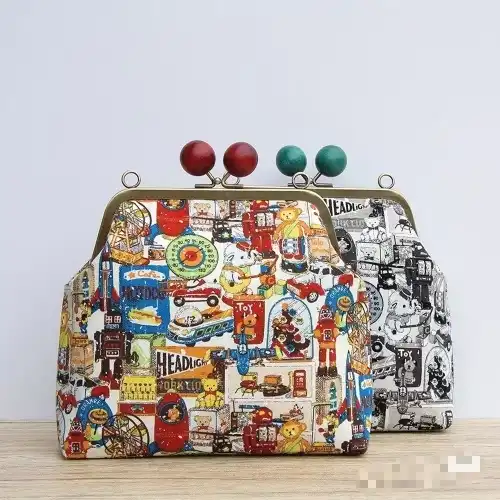
Functional customization addresses practical considerations beyond appearance. Handle attachment mechanisms can be modified to allow removable straps, converting clutches into crossbody bags or providing versatility that consumers increasingly expect. Clasp engagement force can be calibrated—tighter closures provide security for valuable contents while lighter mechanisms offer convenience for frequently accessed items. Hinge design variations affect how widely bags open and how smoothly they articulate, influencing user experience in subtle but meaningful ways. Some advanced customization includes integrated features like magnetic catches, snap reinforcements, or even small chain attachments built directly into the frame structure, such as those found in a metal clasp purse frame with handle.
Material hybridization represents an emerging customization frontier where manufacturers combine different metals or incorporate non-metallic elements into frame assemblies. Where maximum strength is required due to stress concentration, frames may include zinc alloy bodies with strengthened iron hinge pins. For luxury uses, frame designs might include decorative inserts made of enamel, resin, or even semi-precious stones. For firms that prioritize sustainability, environmental concerns have led to the creation of eco-friendly plating substitutes and recycled metal content possibilities. Because of the wide range of customisation options, hardware may transform from generic parts into distinctive design features that significantly influence a brand's identity and placement in the marketplace.
Metal Clasp Purse Frame With Handle Supplier: Carol
Professional company Carol Metal specializes in making hardware accessories and personalized metal purse frames for the handbag market. Carol provides businesses looking for premium bag frames, handles, buckles, locks, and related hardware components with complete solutions thanks to her vast manufacturing, electroplating, and design knowledge. The business has an integrated facility that ensures quality control at every level of manufacture, offering full services from early idea creation to final packaging.
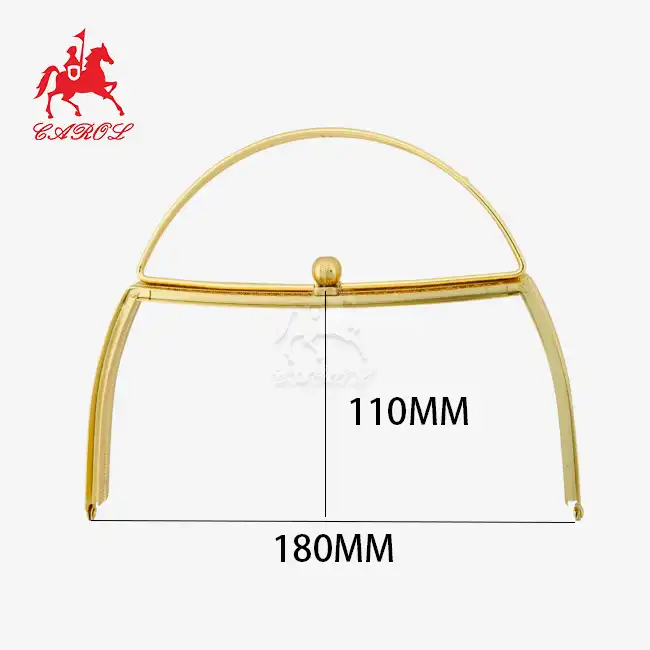
As specialized suppliers of metal clasp purse frames with handles, Carol maintains inventory of standard sizes while offering extensive customization capabilities. The 18cm by 11cm frame with light gold finishing is just one of many possible configurations; customers may choose the exact size, color, material, and functional characteristics that best suit their needs. Carol's manufacturing experience provides consistent quality across order amounts ranging from prototype numbers to big wholesale shipments, whether she is sourcing zinc alloy components for luxury collections or iron frames for economical production runs.
Customers traversing intricate supply networks benefit greatly from the company's vertical integration. On-site electroplating facilities remove the coordination issues that come with dealing with numerous suppliers by enabling quick development of unique finishes and guaranteeing color consistency across production batches. Using years of industry knowledge, technical consultancy services assist purchasers in choosing the best material and finish combinations for their particular applications. Before being sent, products are put through a thorough quality testing process to ensure mechanical performance, finish adherence, and dimensional correctness.
Contact Carol personally at tony@carolxiao.com for quotes on metal clasp purse frame with handle or to talk about developing bespoke hardware. The group provides thorough specs, cost details, and manufacturing schedules in a timely manner. Whether you're a designer starting a new accessory line or an established handbag maker looking for a trustworthy hardware partner, Carol's production skills, flexibility with modification, and dedication to quality give the groundwork for a successful product development.
References
- Materials Science and Engineering Research Institute. (2023). "Comparative Analysis of Metal Alloys in Fashion Hardware Applications." Journal of Materials Engineering, 45(3), 287-301.
- International Handbag Manufacturing Association. (2024). "Standards and Best Practices for Bag Frame Hardware Specifications." Technical Report Series, Volume 12.
- Chen, L., & Wang, M. (2023). "Electroplating Technologies for Fashion Metal Components: Advances in Corrosion Resistance." Surface Treatment Technology Quarterly, 38(2), 156-174.
- European Fashion Accessories Council. (2024). "Material Selection Guide for Sustainable Hardware Production in the Accessories Industry." Industry White Paper.
- Zhang, H., et al. (2023). "Mechanical Performance Testing of Zinc Alloy Die-Cast Components for Handbag Applications." Journal of Manufacturing Processes, 67, 445-459.
_1753256285958.png)

_1754990596544.webp)
